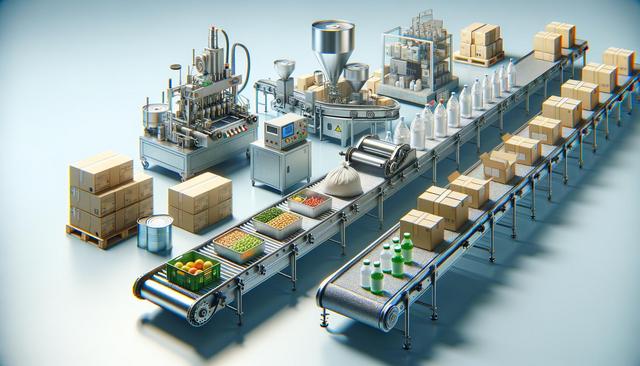The Purpose and Importance of Food Packing Companies
Food packing companies serve as a vital link between food producers and consumers. Their primary responsibility is to ensure that food products are safely and efficiently packaged for storage, transportation, and sale. By using specialized equipment and materials, these companies help prevent contamination, preserve freshness, and comply with industry regulations. The importance of food packing extends beyond just aesthetics; it directly affects food safety and consumer trust. The packaging also communicates vital information such as nutritional content, expiration dates, and usage instructions.
In a globalized food market, the role of food packing companies has expanded to include logistical efficiency and sustainability. With growing demand for longer shelf lives and reduced waste, these companies are exploring innovative packaging solutions, such as biodegradable materials and vacuum-sealing techniques. Their efforts help reduce food spoilage during transit and storage, benefiting both businesses and end consumers.
Types of Food Packing Methods
There are several methods food packing companies use to suit different types of food products. The choice of method depends on factors like the nature of the food, shelf-life requirements, and distribution needs. Here are some commonly used packing techniques:
- Vacuum Packaging: Removes air from the package to prevent oxidation and bacterial growth.
- Modified Atmosphere Packaging (MAP): Replaces the air inside the package with a gas mix to extend freshness.
- Flexible Packaging: Uses lightweight films and materials to reduce shipping costs and environmental impact.
- Rigid Packaging: Includes containers like cans, glass jars, and plastic tubs that offer strong protection.
Each method has its advantages and is selected based on the product’s characteristics. For instance, vacuum packaging works well for meats and cheeses, while MAP is often used for fresh produce and baked goods.
Quality Control and Safety Standards
Ensuring safety and quality is at the heart of every food packing operation. Food packing companies must adhere to strict regulatory standards set by government agencies and international bodies. These standards cover hygiene practices, material safety, labeling accuracy, and traceability. Regular inspections and audits help maintain compliance and reduce the risk of recalls or health hazards.
To meet these standards, companies often implement comprehensive quality control systems that include:
- Hazard Analysis and Critical Control Points (HACCP) protocols
- Good Manufacturing Practices (GMP)
- Employee training programs focused on hygiene and food safety
- Routine machine maintenance and calibration
By maintaining rigorous quality checks, food packing companies help ensure that consumers receive safe, high-quality food products.
Sustainability Trends in Food Packaging
As environmental concerns continue to rise, food packing companies are under increasing pressure to adopt sustainable practices. Traditional materials like plastic are being replaced by eco-friendly alternatives such as compostable films, recyclable paper, and bioplastics. These materials not only reduce environmental impact but also align with consumer preferences for green products.
In addition to material choices, companies are improving their processes to minimize waste and energy use. Common sustainable practices include:
- Using digital printing to reduce ink and waste
- Designing smaller, lighter packaging to lower transportation emissions
- Implementing closed-loop recycling systems within production facilities
Companies that prioritize sustainability often gain a competitive edge, as consumers and retailers increasingly favor responsible brands.
Challenges and Opportunities in the Industry
Despite its essential role, the food packing industry faces several challenges. Supply chain disruptions, fluctuating raw material costs, and evolving regulations can all impact operations. Additionally, meeting the dual goals of safety and sustainability is complex, requiring continuous innovation and investment.
However, these challenges also present opportunities. Advances in smart packaging—such as QR codes, temperature-sensitive labels, and tamper-evident seals—offer new ways to improve transparency and consumer engagement. Automation and AI are also transforming the industry by increasing speed, reducing errors, and optimizing resource use.
By staying agile and responsive to market trends, food packing companies can continue to thrive while contributing to a safer, more sustainable food system.
Conclusion
Food packing companies are an indispensable part of the food supply chain, ensuring that products reach consumers safely, efficiently, and sustainably. From selecting the right packaging materials to maintaining rigorous quality controls, these companies play a crucial behind-the-scenes role in the global food industry. As consumer expectations and regulatory standards evolve, ongoing innovation and commitment to sustainability will be key to their continued success. For food producers and retailers alike, partnering with a reliable packing company can significantly enhance product integrity and customer satisfaction.




Leave a Reply